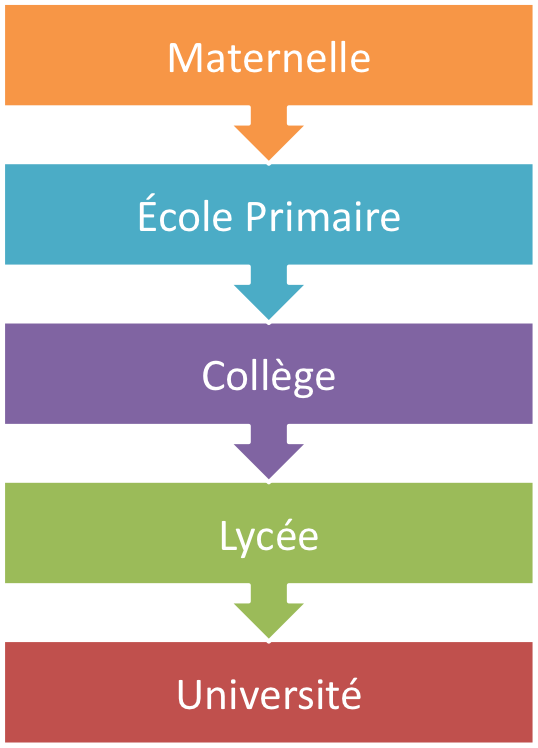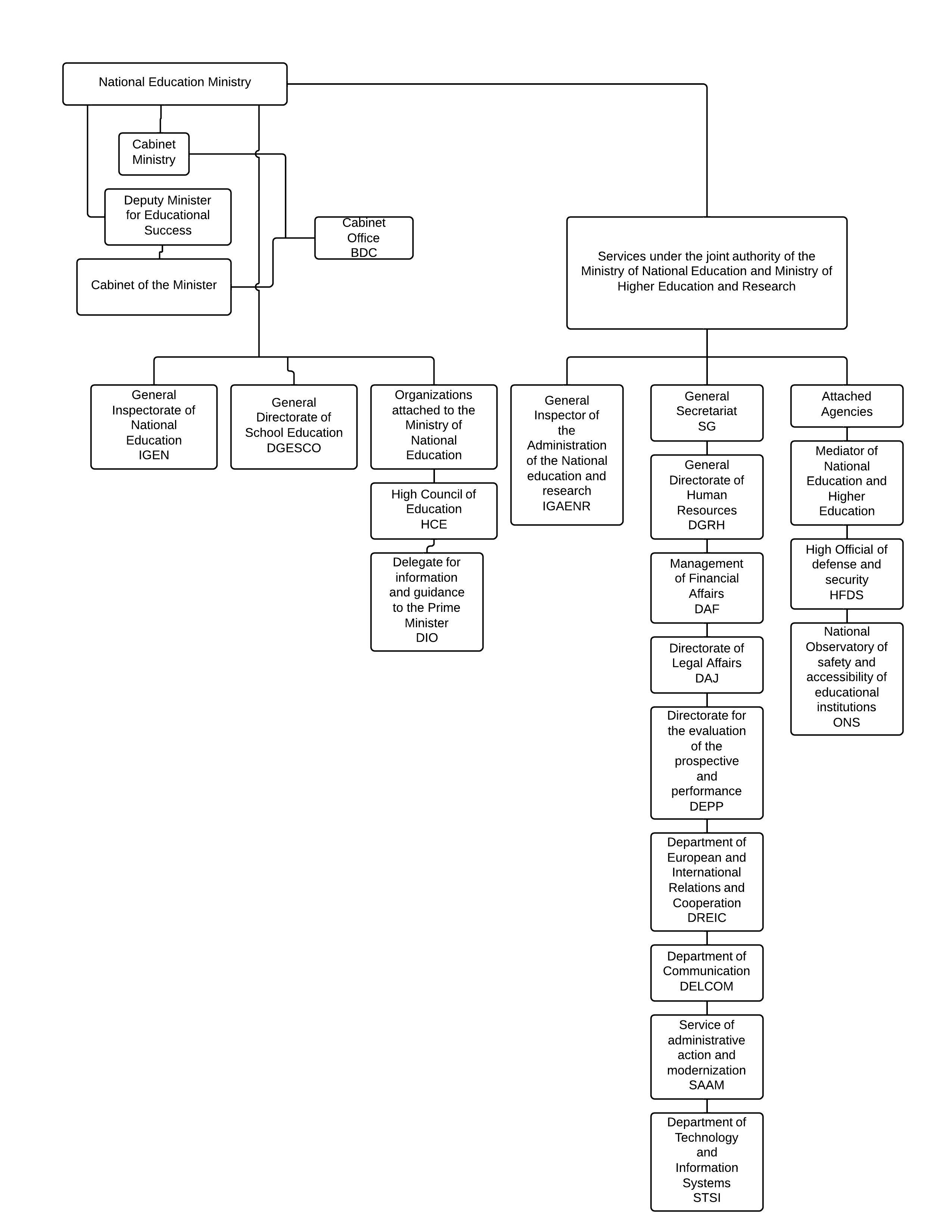Structure of The French Education System
 The current French educational system is characterized by a centralized, uniform and highly state regulated system. The National Ministry of Education is the largest employer in the country, as every teacher is a civil servant. University professors and researchers are also paid by the state (Community of Knowledge on Arts and Cultural Education in Europe, 2013). Like much of Europe, this national system provides free education at every level and advancement in this educational system is conditional upon the successful completion of comprehensive exams.
The current French educational system is characterized by a centralized, uniform and highly state regulated system. The National Ministry of Education is the largest employer in the country, as every teacher is a civil servant. University professors and researchers are also paid by the state (Community of Knowledge on Arts and Cultural Education in Europe, 2013). Like much of Europe, this national system provides free education at every level and advancement in this educational system is conditional upon the successful completion of comprehensive exams.
The French education system consists of five levels. The pre-elementary level (maternelle), the elementary level (école primaire), the middle school level (collège), the high school level (lycée) and finally the university level (Gutek, 2006).
The structure of the French education system can be seen greater detail in the diagram below. The system begins to track students with six different tracks in high school. At the end of high school, students wishing to continue to higher education after their high school must pass their respective baccalauréat for their track. The baccalauréat is a comprehensive national examination which demonstrates that one has mastered high school skills successfully. It is a prerequisite for entering higher education. Higher education is also highly tracked by field of study, though the system has now uniformly adopted the Licence-Master-Doctorat format to be in line with Europe’s Bologna Process standards and the US system in order to foster greater student mobility and the easier recognition of the degrees abroad (Gutek, 2006).
Click on diagram above for PDF version
Structure of the National Ministry of Education
The government structure in charge of education is the National Ministry of Education. As the largest employer in France, the diagram below demonstrates its size and complexity.
(Ministère de l’éducation nationale, 2012)




